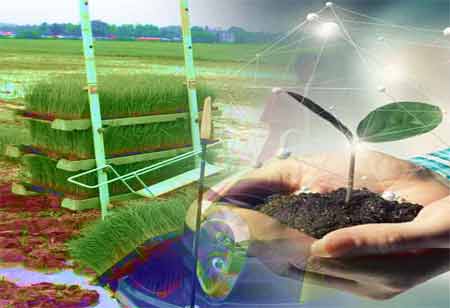Thank you for Subscribing to Agri Business Review Weekly Brief
How does Biochar Help Improve Soil Health
Modern agriculture has relied heavily on mechanical tilling, single crops, chemical fertilizers, herbicides, and pesticides.

By
Agri Business Review | Friday, March 24, 2023
Stay ahead of the industry with exclusive feature stories on the top companies, expert insights and the latest news delivered straight to your inbox. Subscribe today.
Adding biochar speeds the transition to healthy soil and improves plant nutrient uptake, lowering the demand for fertilizer.
FREMONT, CA: Modern agriculture has relied heavily on mechanical tilling, single crops, chemical fertilizers, herbicides, and pesticides. As a result, much of the farmland soil in the U.S. is devoid of nutrients, natural soil bacteria, and organic matter, with wind and water erosion continuing to degrade topsoil. Extreme weather patterns harm agricultural output. Global shortages of fertilizer and gasoline worsen the concerns and supply chain issues. There is a need for agricultural practices and amendments that improve soil quality, reverse chemical dependence, boost farm production, and make agriculture more resilient and sustainable.
Biochar is one of the tools that can help improve the current state of agriculture, benefiting the soil and the planet as a whole. There are currently national and international campaigns to "become green" by reducing the use of pesticides and transitioning to organic farming. The change away from pesticides must require a multiyear transition rather than a one-size-fits-all, rapid, and mandated change that could result in Dust Bowl-like conditions and crop failures leading to starvation. Thankfully, there is a road to soil regeneration that provides the means to restore it to life while also reducing greenhouse gas emissions.
Regenerative approaches to agriculture and soil health preserve or enhance soil qualities essential for present and future agricultural production and crop quality. Regenerative agriculture is not a new practice but rather a method to land cultivation that strengthens the soil's capacity to support plant growth and store carbon. By restoring ecosystem health and biodiversity, this strategy attempts to provide benefits such as higher resistance to drought and other extreme weather events, increased nutritional content in food, and increased profitability for farmers, while also assisting in mitigating climate change.
The regenerative agriculture movement has emerged as a response to the tendency of industrial agriculture to decrease rather than improve soil fertility over time. Mechanized tilling and extensive use of synthetic fertilizers and pesticides, the soil's ability to retain nutrients have been reduced, diminishing its agricultural output. Regenerative agriculture tries to repair this damage and regenerate the soil harmed by conventional industrial agriculture. Farming practices and soil management techniques utilize to restore the soil's natural levels of carbon, nutrients, and biological complexity. At the same time, chemical herbicides, pesticides, and the majority of fertilizers get excluded or used sparingly.
Biochar is an exceptionally stable form of carbon with numerous qualities that make it a desirable soil additive. Biochar amendment of soil reduces nitrogen loss, phosphorus leaching, nitrous oxide production, ammonia volatilization, and greenhouse gas emissions. Using biochar improved plant growth, water retention, and drought resistance. These characteristics make biochar an incredible tool for soil regeneration. When regenerative agriculture proceeds, the soil improves as cover crops, alternative crops, manure, charcoal, and other organic resources get integrated. Sustainable agriculture involves farming techniques that preserve soil quality for future generations.





